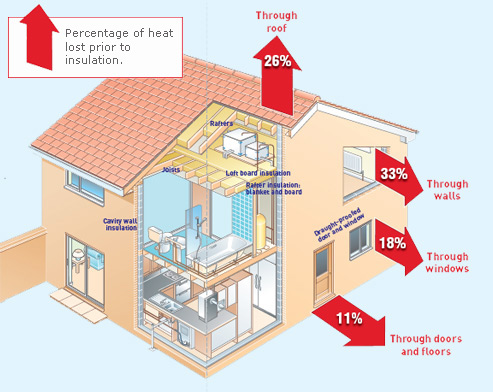Insulation Series 1: What Is It and How Does Insulation Work?
Insulation is something of an enigma to many people. It’s the shadowy material that lines places you rarely see or visit like your attic. Go figure, how insulation works is such a mystery. We know we’re strongly advised to insulate our ceilings, walls, and floors of our houses to increase energy efficiency and facilitate a cozier living space. Beyond that, insulation remains much of a mystery to most of us.
This series will help to pull back the curtains on insulation, helping you figure out the following conundrums:
- What is it?
- How does it function?
- About how much is enough?
- What are the top brands?
What exactly is Insulation?
Thermal insulation–more commonly just called insulation–is a term that describes products that minimize heat loss or heat gain. What you may not know is that many aspects of your Dayton home benefit from proper insulating such as central heating boilers and hot water pipes. In a nutshell, home insulation minimizes the amount of heat that escapes from a building in the winter and protects it from getting too warm in the summer. In the Miami Valley, where we get all kinds of weather, this is especially critical.
Insulation prevalent in your house is typically made from melted down rock or glass and spun into wispy wool strands. A binding agent holds them in place, and then these strands can be made into various products depending upon the location of your house that needs insulating.
The History of Insulation
People have been manipulating insulation to keep our own bodies and our houses at a comfortable temperature for ages. In often fruitless attempts at controlling heat and reducing its inherent ability to transfer to colder air, we have made use of materials such as mud, straw, fur, feathers, etc. In time, we have identified the most successful materials at trapping air and which ones can endure certain environments. We’ve learned a lot about how our homes use and lose heat and how much insulation we need to make our homes energy efficient. Insulation manufacturers have developed new materials to perform better at slowing down the heat and deliver consistent results at a lower price.
Have we lost you yet? Don’t worry. Here comes the important stuff.
Yes, but how does insulation work?
Insulation is a highly underrated tool. You have it to thank for a warmer house in the winter and a cooler one in the summer. Think of one of those $60 travel mugs that keep drinks the desired temperature. They simply have a layer of insulation separating the outside air from your drink. That’s how insulation works.
Air is a bad conductor of heat, so the air pockets insulation traps minimizes the heat that can transfer from the inside of your home to the outside. In winter, the heat remains inside a home; in the summer, it remains outside (Good riddance!).
How insulation works is merely a means of catching air, in particular gas, in pockets or bubbles. Insulation divides the space into our ceilings, walls, and other areas into billions of these little air pockets or bubbles. When hot air attempts to move through the insulation to cold air, it must warm each air pocket independently before it moves to the subsequent air pocket, slowing the transfer of heat through your house.
Nothing But the Best
We have examined many brands and lines of insulation when determining the best for your Dayton home. Thanks to our research, we can confidently back Owens Corning Pink Blown-in insulation.
When The Weather Outside Is Frightful…
Poor insulation and ventilation will give you even more of a fright in the form of ice dams. Ice dams are so destructive, they’re worthy of an entire blog, so stay tuned for our next in the series.



